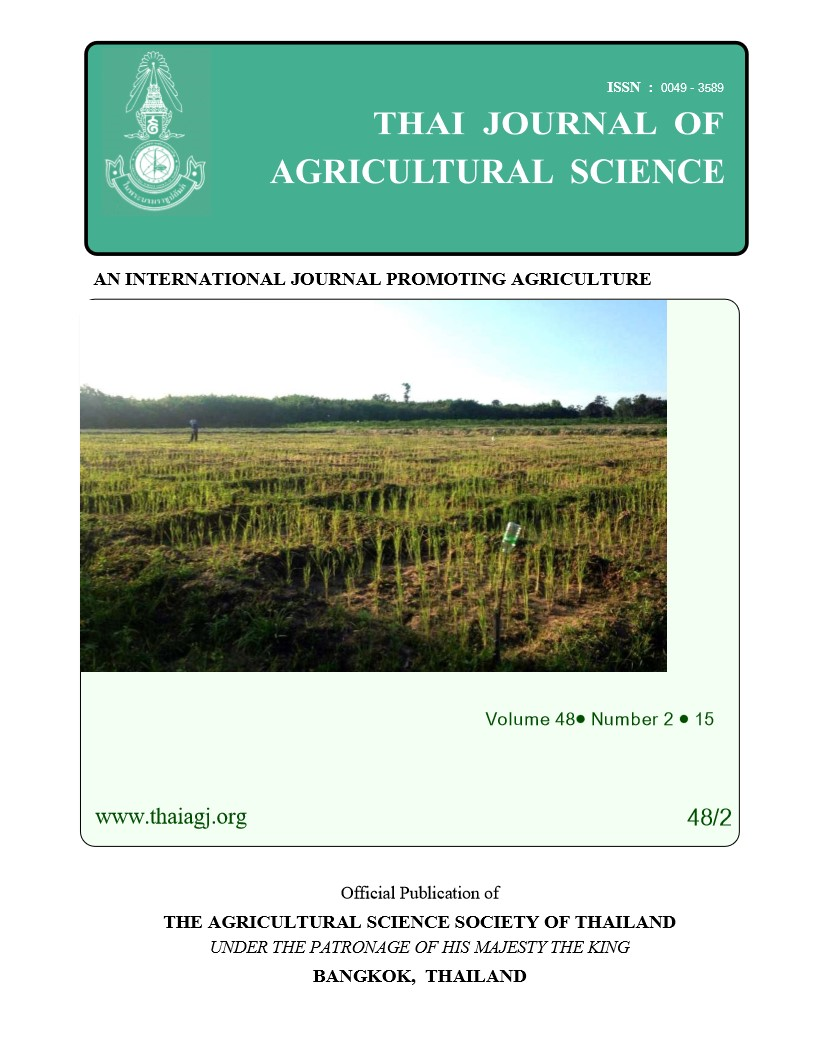Species of Aspergillus Section Fumigati from the Coral Reefs in the Gulf of Thailand and Andaman Sea and their Antagonistic Effects Against Plant Pathogenic Fungi
Main Article Content
Abstract
Twenty seven isolates of Aspergillus section Fumigati were obtained from five marine organisms and sediments from the Gulf of Thailand and the Andaman Sea. The samples were collected underwater by SCUBA diving. The tissue transplanting and soil plate methods using malt extract agar supplemented with 70% sea water and streptomycin were used for isolation. All Petri dishes were incubated at 28 ºC for 5 days. The fungi were identified based on their macro- and microscopic characteristics including SEM photomicrographs and phylogenetic analylsis and most are reported for the first time from a marine environment. Twenty-seven isolates of Aspergillus section Fumigati were found including seven known species and one unidentified species. These were Aspergillus fischeri, A. hiratsukae, A. laciniosus, A. pualistensis, A. siamensis, A. spinosus, A. takakii and Aspergillus sp. (KUFC 7922). The fungal species were found mainly from various species of sponges. The dual culture tests of the eight Aspergillus species with nine plant pathogenic fungi showed strong inhibitory effects against Phytophthora palmivora and Pythium aphanidermatum, and moderate inhibitory effects to various other plant pathogens. However all species failed to inhibit Sclerotium rolfsii. Ethyl acetate crude extracts of the eight Aspergillus species grown on rice based medium at 10,000 ppm completely suppressed mycelial growth of nine plant pathogenic fungi. The crude extract at 1,000 ppm completely suppressed mycelial growth of P. palmivora, and reduced the growth of Alternaria brassicicola and P. aphanidermatum 60% and 70%, respectively. These eight species of Aspergillus may be the source of novel fungicidal compounds and are potential biocontrol agent against various plant pathogens including the two most important plant pathogens, P. palmivora and P. aphanidermatum.


